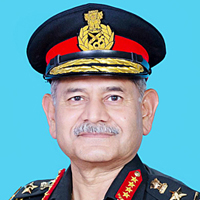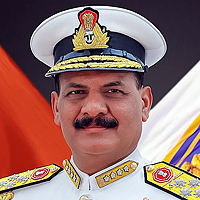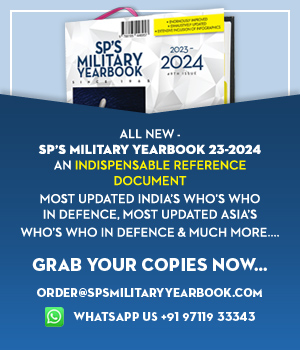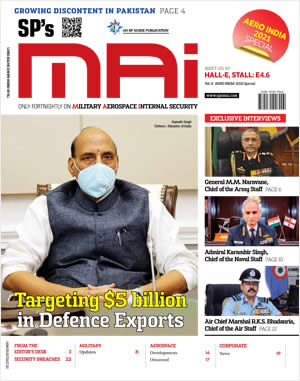INDIAN ARMED FORCES CHIEFS ON OUR RELENTLESS AND FOCUSED PUBLISHING EFFORTS

The insightful articles, inspiring narrations and analytical perspectives presented by the Editorial Team, establish an alluring connect with the reader. My compliments and best wishes to SP Guide Publications.

"Over the past 60 years, the growth of SP Guide Publications has mirrored the rising stature of Indian Navy. Its well-researched and informative magazines on Defence and Aerospace sector have served to shape an educated opinion of our military personnel, policy makers and the public alike. I wish SP's Publication team continued success, fair winds and following seas in all future endeavour!"

Since, its inception in 1964, SP Guide Publications has consistently demonstrated commitment to high-quality journalism in the aerospace and defence sectors, earning a well-deserved reputation as Asia's largest media house in this domain. I wish SP Guide Publications continued success in its pursuit of excellence.
- Indian Air Force Aims for Full Indigenous Inventory by 2047 — Air Chief Marshal A.P. Singh
- General Upendra Dwivedi takes over as the Chief of the Army Staff
- Rajnath Singh assumes charge as Defence Minister for the second consecutive term
- Admiral Dinesh K. Tripathi assumes Command of the Indian Navy as 26th Chief of the Naval Staff
- Prime Minister witnesses 'Bharat Shakti' – a Tri-Services Firing and Manoeuvre Exercise in Pokhran, Rajasthan
Lockheed Martin-built nextGen missile warning satellite launched
The first space-based Infrared system (SBIRS) geosynchronous (GEO-1) spacecraft, built by Lockheed Martin for the US Air Force, was successfully launched on May 6 from Cape Canaveral Air Force Station, aboard a United Launch Alliance Atlas V rocket. SBIRS GEO-1 is the most technologically advanced military infrared satellite ever developed and will deliver vastly improved missile warning capabilities for the nation while simultaneously improving the nation’s missile defence, technical intelligence and battlespace awareness mission areas.
SBIRS GEO-1 includes highly sophisticated scanning and staring sensors that will deliver improved infrared sensitivity and a reduction in area revisit times over the current constellation. The scanning sensor will provide a wide area surveillance of missile launches and natural phenomena across the earth, while the staring sensor will be used to observe smaller areas of interest with superior sensitivity. These dual independent sensors will enhance early warning of missile launches around the globe, support the nation’s ballistic missile defence system, greatly expand our technical intelligence gathering capability, and bolster situational awareness for warfighters on the battlefield.





